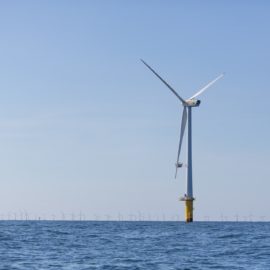
Climate change is here. Stopping greenhouse gases is a part of reducing the effects. As a state we are failing.
A new inventory of greenhouse gas emissions — blamed for raising worldwide temperatures and sea levels and for causing more intense hurricanes and rains — indicates Louisiana produced almost 217 million metric tons of carbon dioxide and carbon-equivalent gases in 2018. That’s a slight increase from 2005, in large part because industry accounts for about two thirds of Louisiana’s total emissions – far more than its national share. The inventory was compiled by professor David Dismukes, executive director of LSU’s Center for Energy Studies, and presented Tuesday to a committee of scientists advising Gov. John Bel Edwards’ Climate Initiatives Task Force. It will be used as a starting point to develop strategies for meeting Edwards’ emission reduction goals, which use 2005 as the baseline to: Cut total 2025 emissions by 26% to 28%, Cut total 2030 emissions by 40% to 50% and Attain “net zero” emissions by 2050. A net zero level means any carbon emissions created by the state’s economy are offset by reductions or are captured and permanently stored. According to Dismukes’ data, Louisiana’s total carbon emissions in 2005 were 215.17 million metric tons. In 2018, they were 216.96 metric tons.
nola.com
These re the same goals of the 2017 Paris accords. The Paris accords limited temperature rise to 1.5 degrees but in 2020 we went up 1.2 degrees.
“The goal of this study is to provide you all with a tool to look at where those emissions are, not only from a high level perspective … but where we’re seeing stuff in the real big money item sectors. And when I say big money, I mean big emission sectors,” Dismukes said. “We have some very high, problematic sectors [of the economy] that have very high concentrations of emissions, and if you’re following the old Watergate adage of ‘follow the money’, following the emissions is kind of where you would want to go. Looking for some of those very big individual point sources from a policy perspective may be something you want to consider.”
These carbon emissions block heat from escaping the atmosphere and some even hold more heat in the atmosphere. As humans, we are responsible for a 48% increase in carbon emissions since the Industrial Age.
Dismukes’ inventory update, the first since he created a similar one in 2010 based on 2005 data, shows that the state’s emissions have both risen and fallen by significant amounts since 2000. In that year, the total was 242 metric tons. It dropped to 206 million metric tons in 2014, but in recent years it has been rising again, leaving Louisiana far short of the governor’s goals. And the 2018 totals are expected to continue to rise. That’s due to new and expanded petrochemical and refinery plants across the state over the past 10 years, many of them attracted to Louisiana by cheap prices for natural gas produced from hydrofractured Haynesville Shale deposits in the northwestern part of the state and by lucrative tax breaks offered by the Legislature. Another boost to the numbers is likely already underway, from new or under-construction liquefied natural gas export sites in Cameron and Plaquemines parishes, also the result of cheap shale gas. Each of these properties includes large, gas-powered electricity generating plants that rival similar plants operated by regulated utilities such as Entergy.
Louisiana differs from the national figures. Nationally 22% of emissions are due to industry, we have over 60% with half of that due to oil and gas.
Dismukes said Louisiana industrial carbon emissions grew 1% to 1.5% each year between 2011 and 2018. Among Louisiana’s 20 biggest carbon emitters, the growth was even higher: an average of 3.5% per year. Most of those increases were among petrochemical plants and refineries, with the No. 1 polluter, the CF Industries nitrogen manufacturing complex at Donaldsonville, reporting more than 8 million tons of carbon dioxide and 2 million tons of nitrogen oxide emissions in 2019, according to U.S. Environmental Protection Agency data used by Dismukes. The company completed a $2.1 billion expansion in 2016, and in 2020 it announced another $41.1 million initiative to increase its nitric acid production. Both projects were assisted by state aid through the industrial tax exemption program. No. 2 was ExxonMobil’s Baton Rouge refinery with about 6 million tons of carbon dioxide emissions. In December, the refinery announced a $240 million expansion that would begin this year, also supported by the state’s tax credit program. And the refinery totals do not include emissions from the company’s nearby chemical plant, which announced a $469 million expansion in March. The inventory ranks the Sabine Pass LNG export property in Cameron Parish as the third largest emitter, with more than 5 million tons in 2019.
The Haynesville Shale formation is a large factor in the carbon emissions.
The expansions at those plants are part of a statewide trend of new investments spurred in large part by the cheap natural gas that companies are finding in thousands of natural gas wells in the Haynesville Shale formation and similar supplies of cheap shale gas from out of state. Dismukes said statewide industrial carbon emissions hovered around 120 million metric tons a year before 2008. But since then, they have increased by as much as 17%. But the 2019 totals don’t capture significant emission increases already occurring or expected from expansions of Sabine Pass LNG and other Louisiana polluters, Dismukes said. In Cameron Parish, Cameron LNG already has opened the first part of its export terminal at Hackberry, construction is underway at Venture Global LNG’s site on the Gulf of Mexico and Driftwood LNG plans a terminal there. Venture Global also has plans for a liquified natural gas property in Plaquemines Parish. These plants emit carbon when they convert natural gas to liquid. But they also include, or will include, electricity generating stations averaging about 1,200 megawatts. These stations, fueled by natural gas, will power the refrigeration units needed to liquefy the gas – emitting more carbon.
Carbon due to energy creation is down to 13% largely as Entergy and other utilities are moving to renewable sources of energy.
Dismukes’ inventory also includes an estimate, based on EPA information, of carbon equivalent emissions that are captured by wetlands and forests in the state and thus not released into the air. The natural “sinks” are estimated to have removed more than 35 million tons of emissions in 2018. EPA’s information indicates that the natural sink’s ability to capture carbon dropped significantly after Hurricane Katrina, likely the result of the loss of more than 200 square miles of wetlands during the storm. The carbon captured by natural resources began increasing again in 2010.
The Climate Task force has received over 170 recommendations including:
Pump carbon dioxide underground for permanent storage in deep saltwater aquifers
Develop state or national carbon reduction requirements for individual industry segments
Impose “carbon taxes” requiring industries to pay increasing amounts for carbon releases over time, with the revenue collected redistributed among state or national taxpayers or used for other carbon reduction efforts. Differing versions of the carbon tax proposals have been suggested by both some oil companies and environment advocacy groups.
Non-profit organizations also have urged that any solutions be tailored to improve living and health conditions of low-income people and people of color living near existing industry or near carbon-sequestration sites. A draft report of recommendations to be considered by Edwards and the Legislature is scheduled to be presented to the full task force in December, with a final version to be approved in January.
Industry is our weakest spot on stopping climate change effects and oil and gas are the largest component there. That is where the state needs to focus.



